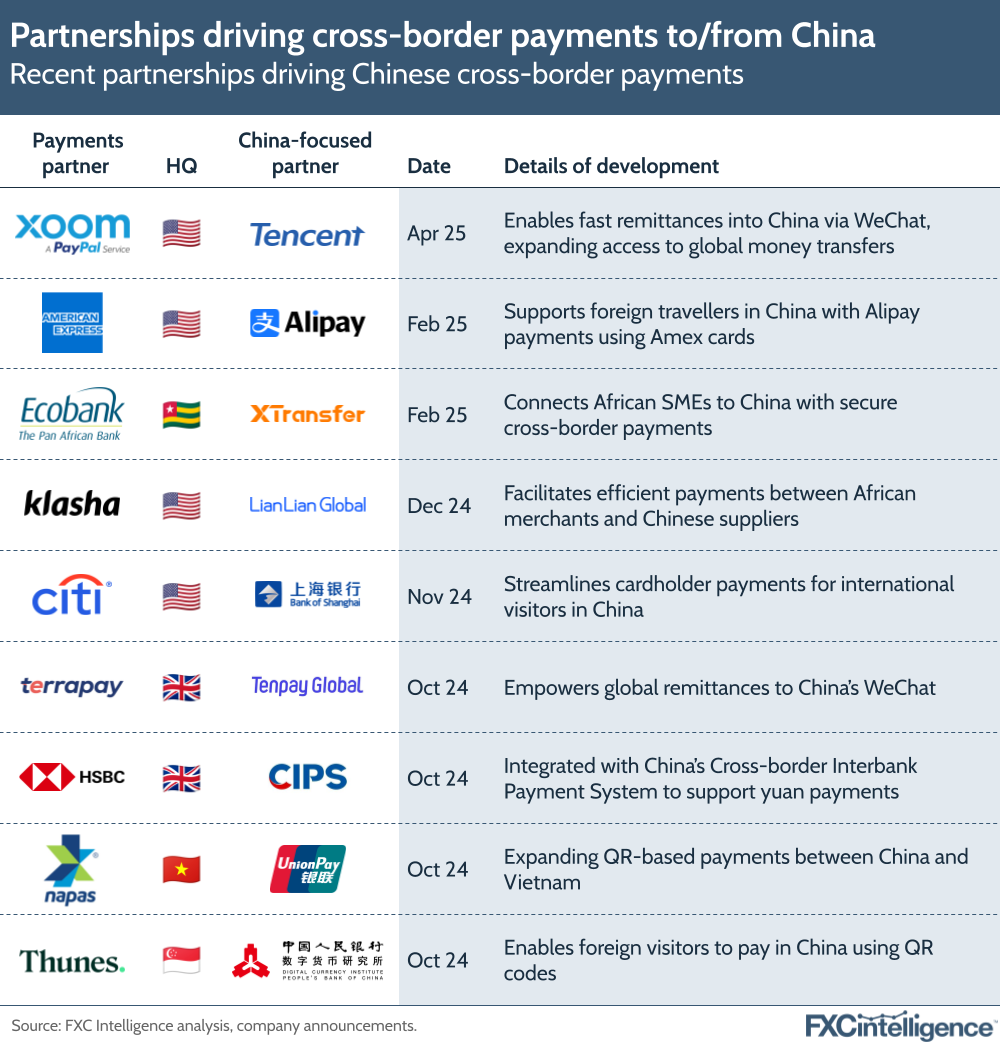Historically, China has been a difficult market to enter due to a mix of regulatory and structural barriers. However, a wave of recent partnerships is helping drive the movement of money into and out of the country.

Most recently, PayPal announced a deal with Tencent to enable remittances via its Xoom platform to WeChat Pay in China. This is not the first move to tie-in remittances with WeChat Pay, which was launched in 2013 as a feature for Tencent-owned instant payments service WeChat and has reportedly amassed over 1.3 billion users. Along with Alipay, it is one of China’s most widely used payment methods and digital wallet offerings, making it a target for other P2P transfer partnerships including TerraPay, MoneyGram, UnionPay International and Thunes.
Beyond remittances, the industry is seeing more moves to meet two key demands: enabling payments for Chinese people in other countries worldwide and accepting payments from visitors to China.
This includes enabling QR payments interoperability with other countries – a payment type that is more embedded in China than other regions – as well as opening up the country to international payments methods. In February, American Express partnered with Alipay to allow Amex cardholders to link their cards to the latter’s digital wallet in the country, allowing them to make payments to businesses in the country.
Companies are also partnering to better serve B2B payments to China, with Africa-focused Ecobank and Klasha partnering separately with Chinese partners to facilitate SME payments into the country. This follows on from PayPal’s September 2024 launch of its Complete Payments Platform in China to expand its reach with local businesses, while WorldFirst introduced a new B2B payments platform in April of that year.
Now is an interesting time for China’s cross-border space, not just due to recent headlines related to US tariffs but also because of the country’s continued move to promote the yuan in international trade. This was kickstarted by the country’s launch of its alternative to Swift, the Cross-Border Interbank Payment System, in 2015, and could be bolstered by its backing of a separate payment system for BRICS countries, as well as its continued rollout of its digital yuan nationwide.
In the meantime, the country’s fintech heavyweights continue to partner with payment companies in the West, bridging the gap between payment systems globally. It will be interesting to see if macroeconomic events affect this demand going forward.
How can I find the right partner to build my next payments offering?


